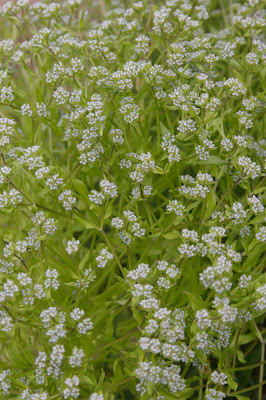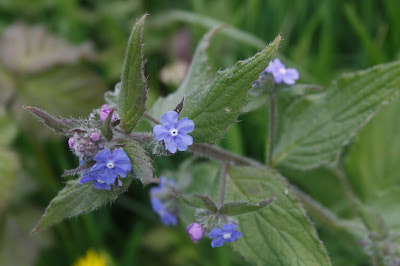I've a head of silver hair which is why I can remember those days in the 1970's when Abergavenny Sewage Works littered the pages of the Monmouthshire/Gwent Bird Report with records of yellow and white wagtail and various passage waders, In those days of course visibility of the treatment works was good, today its like Fort Knox. I recollect an anecdote often relayed by the late Percy Playford back when I was an active 'c' ringer, saying that he had previously run a number of mist netting sessions at the site during which time some of the sewage beds were characterised by large plants yielding a healthy crop of tomatoes, which he subsequently picked and took home to eat.
 |
| common cornsalad |
From Waitrose supermarket cross the road to the new housing estate on the old Coopers Filters site. Heading south and before the fly over there is a restricted lane entrance with a bright yellow barrier. Access can be found around the barrier, the lane then continues adjacent to the housing estate and straight to the sewage works. Where the housing stops there is a field with a pond, the margins supported a good population of slender ground hopper - there was also a single coot and one unaccompanied mallard duckling. A whitethroat sang from a nearby thicket. At the sewage work there is a well worn track, not thought to be a public footpath. This led through two fields to the margins of the River Usk. Here a couple of grey wagtail and a common sandpiper moved between stony spits. A few common wildflowers were in full bloom including, common fumitory, common cornsalad and green alkanet. There were also four species of butterfly on the wing, including red admiral, speckled wood, and orange tip.
 |
| common fumitory |
 |
| green alkanet |